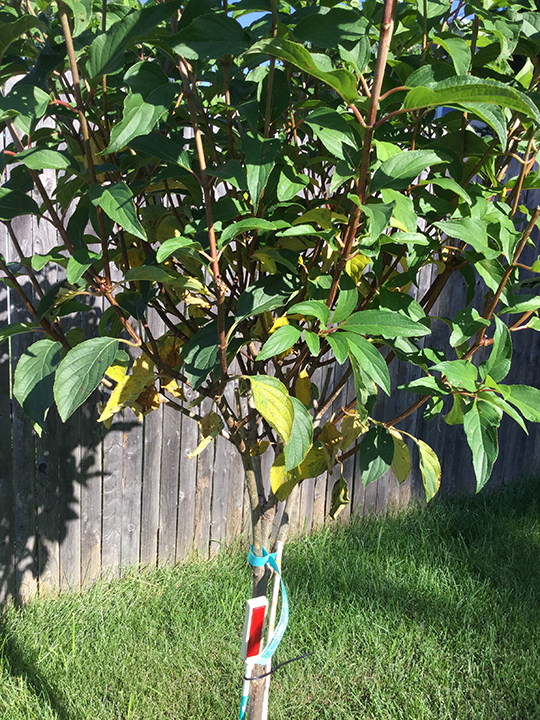8 Easy Facts About Hydrangea Leaves Turning Yellow Explained
8 Easy Facts About Hydrangea Leaves Turning Yellow Explained
Blog Article
9 Easy Facts About Hydrangea Leaves Turning Yellow Shown
Table of ContentsUnknown Facts About Hydrangea Leaves Turning YellowIndicators on Hydrangea Leaves Turning Yellow You Need To KnowNot known Factual Statements About Hydrangea Leaves Turning Yellow Getting The Hydrangea Leaves Turning Yellow To Work
Hydrangea plants are recognized for their beautiful flowers, but in some cases their leaves can turn yellow. This is normally an indicator that something is wrong and the plant requires your help.Hydrangea leaves turning yellow can be a reason for concern. Hydrangea leaves normally transform yellow when the plant is overwatered.
When the roots of a plant are submerged in water for long durations, they begin to suffocate and rot. This process cuts off the origins' oxygen supply, creating the fallen leaves to turn yellow and at some point die. Overwatering can also result in other issues such as leaf decline, origin damages, and fungal development.
If you assume your Hydrangea is overwatered, the very best option is to allow the soil dry totally prior to sprinkling once more. It's additionally a good idea to inspect the drainage of your pot or yard bed and make certain that water is not pooling around the plant's origins. Hydrangea plants require well-drained soil to flourish.
Things about Hydrangea Leaves Turning Yellow
Hydrangea leaves can additionally turn yellow if the plant is not obtaining adequate water. This occurs when the plant does not get enough water, and the dirt starts to dry out.

This is understood as "plant food burn," It happens when the plant's roots are subjected to way too much fertilizer. The roots can not soak up every one of the nutrients and become damaged. This damage creates the leaves to turn yellow and eventually pass away. Other indications of plant food melt consist of brown or yellow leaves, wilting, and stunted growth.
This will certainly aid get rid of any kind of excess fertilizer from the origins of the plant. It's likewise a good idea to decrease the quantity of plant food you are using. Feeding when a month throughout the expanding season ought to suffice. If you are making use of chemical plant food, it's ideal to use one that is thinned down and used according to the maker's guidelines.
The Buzz on Hydrangea Leaves Turning Yellow

If your Hydrangea is infested with insects, treating the plant with neem or horticultural oil is the best solution. It's also excellent to eliminate any type of damaged fallen leaves from the plant (Hydrangea Leaves Turning Yellow).
To stay clear of spreading out the condition, ensure to disinfect your scissors prior to cutting any type of ends. Hydrangea leaves can also turn yellow if the temperature find more worries the plant. This generally happens when the plant is exposed to severe cool or heat. The fallen leaves of the plant will certainly turn yellow and start to hand over.
If the temperature worries your Hydrangea, you need to move the plant to a location where it will be secured from the severe chilly or heat. You can also try to give the plant with some partial color if revealed to direct sunlight. You can likewise try including mulch around the plant base to help regulate the temperature level.
The Only Guide to Hydrangea Leaves Turning Yellow
The fallen leaves can also turn yellow if the Hydrangea plant has root rot. This is typically triggered by overwatering or poor drainage. When the plant's roots are immersed in water for also long, they start to rot. One of the most common origin rot signs is yellowing leaves, as the fungi stops the roots pop over to this web-site from absorbing nutrients from the soil.
Various other indicators of root rot consist of stunted growth, wilting, and leaf decline. Inspect the origins of your Hydrangea if it has root rot. If they are black or brownish, after that they are most likely rotten. If some healthy origins are left, you can attempt to save the plant by replanting it in a brand-new pot with fresh soil.
If your Hydrangea is greatly impacted by origin rot, beginning with a new plant is best. As Hydrangeas age, their leaves will slowly transform yellow and brown before dropping off the plant.
You can assist the plant by ensuring it is obtaining sufficient water and nutrients. You can also mulch around the plant base to help it retain moisture. There are numerous reasons hydrangea leaves may transform yellow and diminish. Hydrangea Leaves Turning Yellow. One opportunity is that the plant is not getting enough water.
Report this page